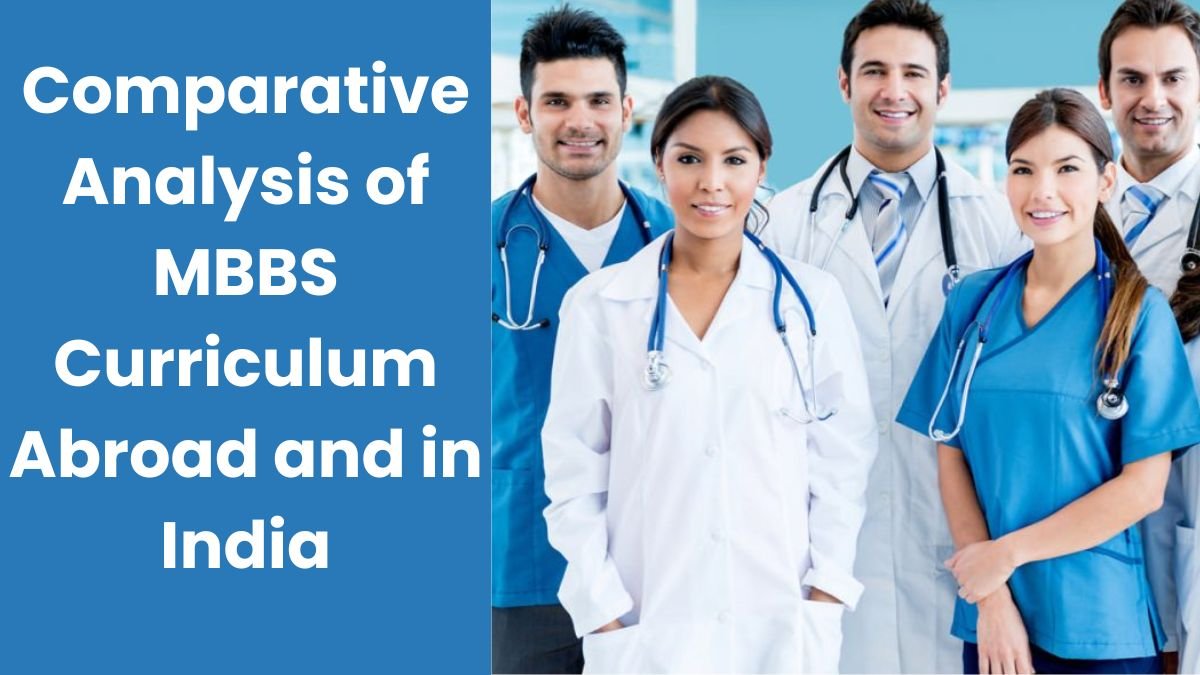The healthcare system of any country depends upon the medical education Comparative . That is the reason MBBS (Bachelor of Medicine, Bachelor of surgery) course is regarded as base to produce doctors. Although the purpose of MBBS remains similar all over the globe that is to train students in diagnosing diseases, treating them and managing them, the ways in which this objective is met varies greatly between universities in India and abroad.
we will be comparing MBBS in India and abroad (the US, the UK, Australia, Russia or any other country) with the main variables being the course structure, duration, the way of teaching, clinical training, examination, post-graduation opportunities, the cost and the culture.
Course Structure and Duration
India: A standard MBBS course in India takes 5.5 years out of which 4.5 years are classroom based studies and 1 year internship is also mandatory.
Major stages:
- 1st year – pre-Clinical (1 st year): Anatomy, Physiology, Biochemistry
- Para-clinical (2 nd year): Pathology, Microbiology, Pharmacology, Forensic
- Clinical (3 rd and 4 th year): Medicine, surgery, gynaecology, ENT, ophthalmology etc.
- The entire program is regulated by the National Medical Commission (NMC).
Abroad: The duration of the course abroad is 5–6 years. In some countries, internship is included in the program, while in others it is separate.
USA: First you have to do a pre-med program, then get admission in MD.
UK and Australia: Usually clinical experience starts during MBBS and research is also given importance.
Teaching Methodology
India:
- Emphasis on lecture-based learning
- Limited technology use
- Uniform curriculum across the country
- Lack of practical training, especially in the first years
Abroad:
Problem Based Learning (PBL): Case study-based learning
Technology integration: virtual simulations, modern labs
Emphasis on research work and group projects Clinical Experience
India:
- Starts from third year
- Training in government hospitals, where the number of patients is high
- One year compulsory internship
Abroad:
- Clinical experience starts from first or second year
- Simulation labs, international exposure
- Experience of different health systems
Examination and Assessment System
India:
- Mainly theoretical exams
- NEET (UG and PG) compulsory
- Lack of practical assessment
Abroad:
- On-going evaluation, presentations, tasks
- OSCE (Objective Structured Clinical Exams)
Nation specific licensing exams such as USMLE (USA), PLab (UK)
India:
- Uniform curriculum
- Emphasis on community medicine
- Less research work
Abroad:
- Interdisciplinary courses, optional subjects
- Integrated curriculum of clinical and basic sciences
- Plenty of research opportunities
Postgraduate opportunities
India:
- NEET-PG required for PG
- Limited seats, high competition
- Registration with MCI/NMC required
Abroad:
- Country-specific licensing exams
- Residency program facility
- Global career opportunities
Cultural and linguistic aspects
India:
- High cultural compatibility
- Language comfort – Hindi or English
Abroad:
- Experience of cultural diversity
- Proficiency in local language mandatory in many countries (eg Russia, China)
- Future Trends
Integration of AI and VR technology
- Global Health Emphasis on
- Shift towards skill-based education
- Training for telemedicine and remote care
Conclusion
Earnings for MBBS in India and abroad are strong and useful in their respective places. India is cheap to study and a culturally friendly country to stay, but it lacks technological advancement, research exposure and also exposure to the internationalization of the health care system, which are available abroad.
A student is expected to make this choice with the memory of the personal preferences, financial condition and career interest. The only thing is that both ways can make you a good doctor, just it depends on experience, resources and opportunities.
